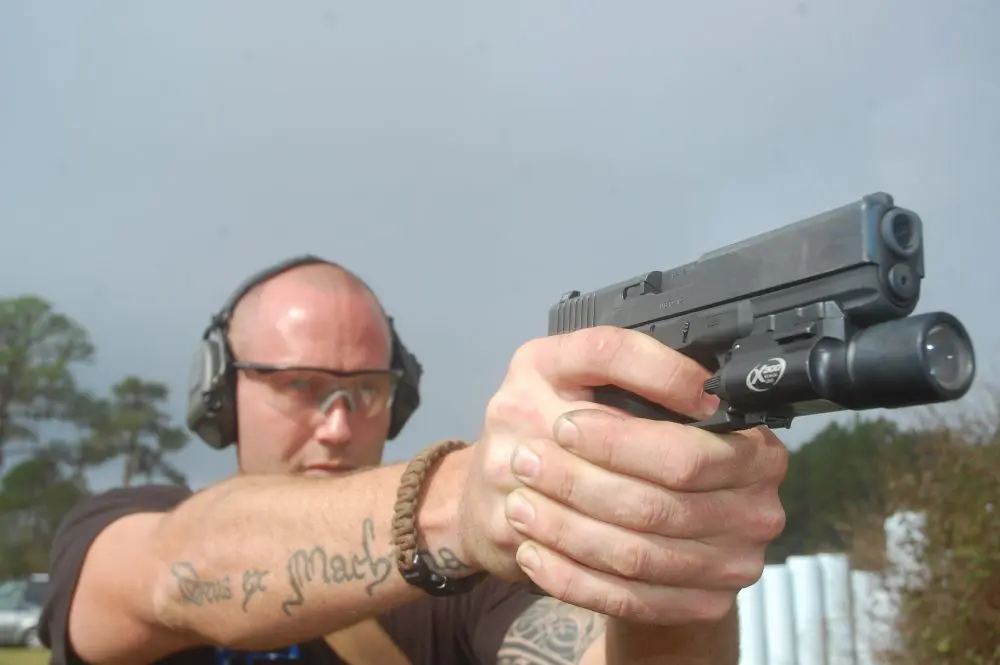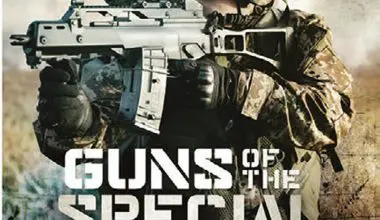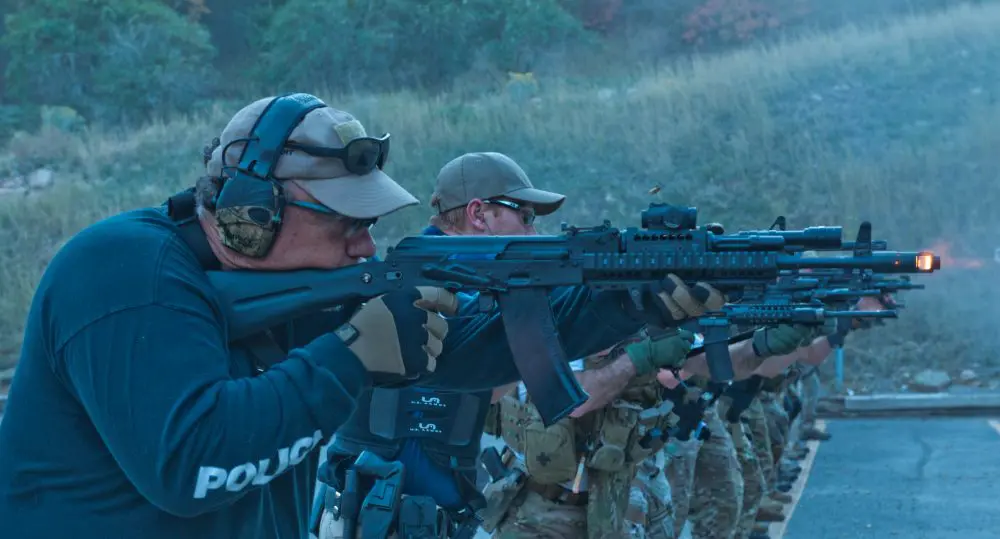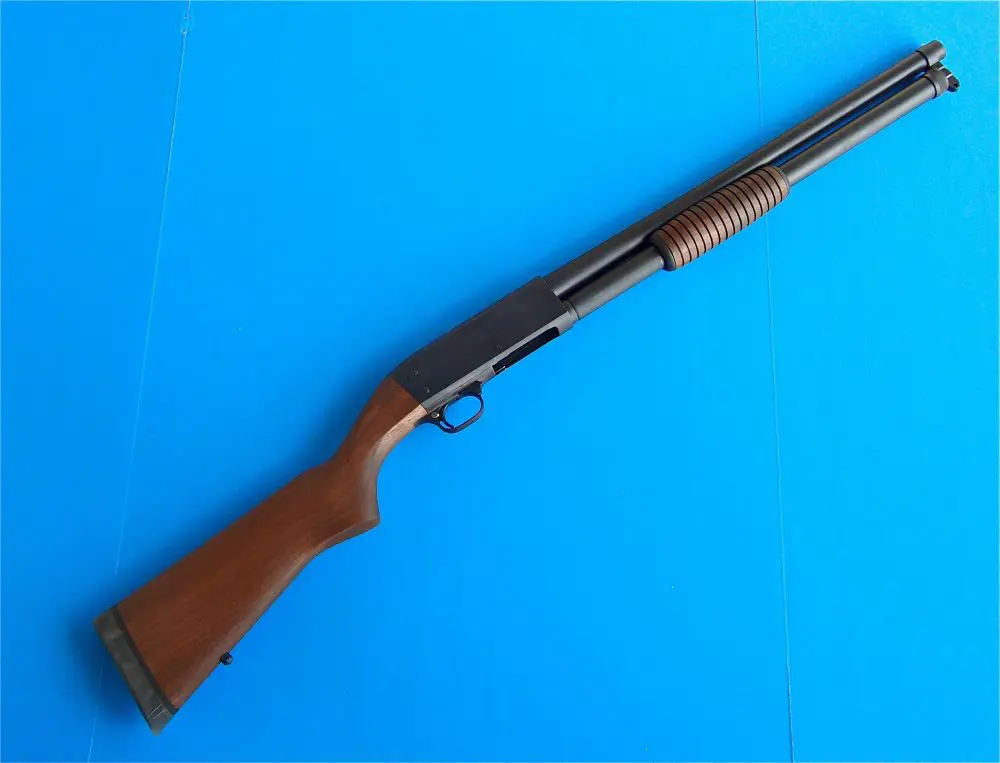
THE Savage Arms 110 FCP platform is often overlooked on two fronts, both as a long-range precision tactical rifle as well as a viable platform to launch .338 Lapua rounds downrange.
The 10/110 FCP models are available from the factory with many notable features (depending on the particular model chosen), including stocks from McMillan, HS Precision, and Choate; detachable box magazines; oversized bolt handle; recessed target crown; and most importantly, Savage’s industry-leading AccuTrigger.
Prejudices abound when it comes to Savage rifles, stemming from misconceptions based on elitist sentiments founded on price-point snobbery without actually exploring what is offered. Many individuals, not to mention industry competitors, want you to believe that the moderately priced Savage must somehow be deficient when compared to rifles costing three to four times more.
I am not criticizing these products. I’m just pointing out that an individual’s or department’s needs should be fully analyzed and the Savage 110 FCP .338 Lapua considered, not rejected out of hand. The Savage 110 FCP .338 Lapua takes a back seat to no rifle in terms of precision, repeatable accuracy, ergonomics, reliability, trigger, and safety.
Table of Contents
SAVAGE MODEL 110 FCP
The rifle evaluated here is the Savage Model 110 FCP, with HS Precision stock, chambered in .338 Lapua. Overall length is 49.5 inches with a free-floated 26-inch button-rifled barrel with 1:9 twist. A well-designed and efficient muzzle brake is threaded on the end of the barrel.
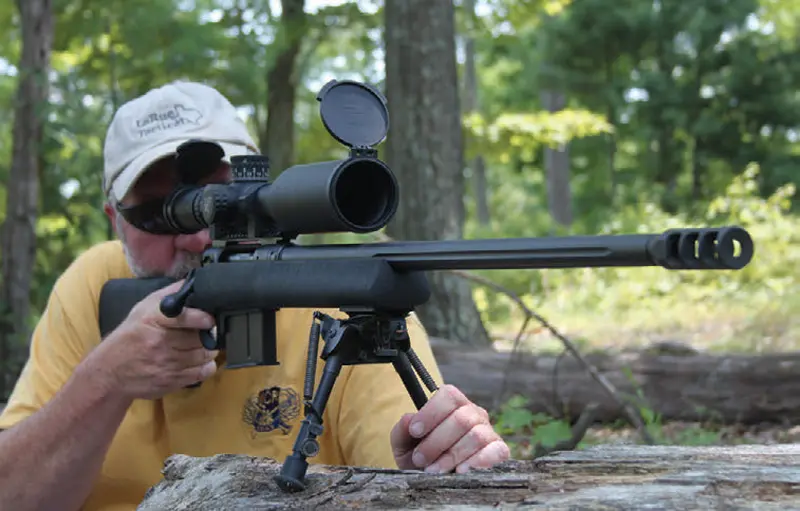
The rifle weighs almost 11 pounds empty without optics. This is a weight more associated with a rifle you can carry, and it has good handling characteristics versus the “boat anchors” typical of many rifles chambered in .338 Lapua.
The 110 FCP’s detachable box magazine holds five .338 Lapua rounds in a single-stack pattern, but the user can still feed single rounds if needed by simply laying them in the raceway.
A notable feature on the Model 110 FCP .338 Lapua is an oversized bolt handle. This facilitates rapid and sure operation of the slick Savage bolt for follow-up shots. The oversize bolt and smooth passage of the bolt in the raceway allow minimal disturbance of the rifle when the bolt is worked.
The Model 110 FCP’s oversized bolt handle and detachable magazine lend themselves to performing in a tactical environment and maximize the Savage FCP’s potential.
A third swivel stud is installed for bipod use without having to sacrifice the ability to use a sling.
ADD-ONS ALREADY INCLUDED
Savage has done a service to the end user of the Model 110 FCP .338 Lapua by doing their homework and including features that are usually added to a precision rifle after it is purchased.
The first requirement of a tactical rifle is precise accuracy. The HS Precision stocked Model 110 FCP I tested over an extended time period constantly produced sub-MOA groups with several different ammunition brands—an important logistic consideration.
The HS Precision stock is rock solid, with design characteristics that make it conducive to long-range shooting from the prone position using sand bags or a bipod. The wide, flat forend handles bipods and sandbags with equal aplomb. It is not exclusively designed for shooting from the supported prone or bench positions but also permits offhand and fieldexpedient positions if needed.
The ergonomics of the stock allow a comfortable, repeatable cheekweld. The HS Precision stock contributes to the ruggedness of the Model 110 FCP .338 Lapua ensuring the second key element of a precision rifle is met—accuracy to be constant and repeatable no matter the conditions.
The Savage 110 bolt design must be discussed. Many misunderstandings surround the Savage bolt-action, most attributed to ill-informed conjecture surrounding the floating bolt head and barrel nut arrangement. Many critics mistakenly label these as strictly cost-saving measures instead of an ingenious alternative method of producing accuracy without spending undue time and money on precise quality control or hand fitting.
The purpose of the floating bolt head is to allow the bolt’s locking lugs to line up independently from the bolt body. This eliminates any minor imperfections between the axis of the receiver and the axis of the bore. The Savage bolt finds its own sweet spot when it locks up due to the floating bolt head behaving independently of the bolt’s main body. This system enables a truly free-floated barrel, and improved gas sealing is a by-product of this design. Savage is one of the strongest actions produced.
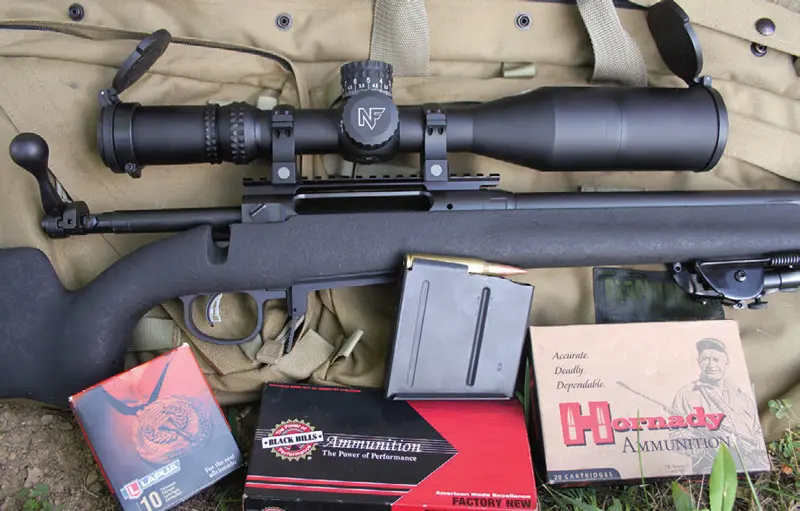
SAVAGE ACCUTRIGGER
The Savage AccuTrigger is a huge part of the accuracy capability derived from the Savage Model 110 FCP .338 Lapua. In my opinion, the AccuTrigger is just as important as the Savage bolt action and quality button-rifled barrel. A rifle’s trigger is the interface between shooter and rifle and must be right or accuracy will suffer.

The industry award-winning AccuTrigger stems from then-Savage President Ron Coburn’s desire to give the shooter a proper trigger that is crisp, creep free, and fully adjustable between 1.5 and 6 pounds by the user, yet totally safe from accidentally firing if jarred or dropped.
A by-product of the AccuTrigger design effort is the inclusion of a new three-position teardrop safety conveniently located for smoother, quieter operation. Without going into minutiae, the AccuTrigger’s distinctive release lever (AccuRelease) in the trigger is the secret to maintaining minimal trigger weight, without creep, while keeping the system safe.

The AccuTrigger is adjustable by removing the action from the stock and turning a single screw with the supplied tool. Importantly, even before the AccuTrigger’s addition, the Savage bolt action was renowned for one of the fastest lock times in a production rifle.
Combine fast lock time with the AccuTrigger, and the Model 110 FCP HS Precision .338 Lapua is equipped with one of the finest production triggers on the market. This contribution to precise accuracy cannot be overemphasized.
The advantage of the .338 Lapua chambered in a rifle like the Savage 110 FCP is best understood in terms of portability and the likelihood the weapon will be present when the opportunity for use arises. The .338 Lapua is clearly superior to the .308 Winchester and .300Win Mag for long-range personnel interdiction because of better ballistics and downrange energy.
In the same vein, the .338 Lapua chambered Savage 110 FCP is the better sniping weapon compared to the .50 BMG because of its portability and similar ballistics without the blast signature and weight of a .50 BMG. Proponents of the .338 Lapua make no claim for it as the superior anti-materiel weapon.
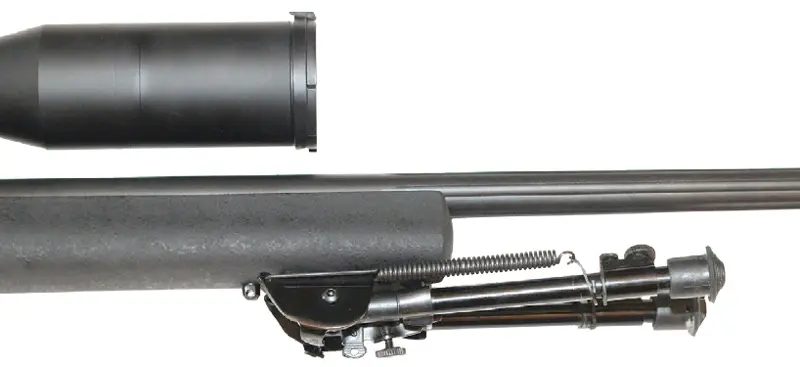
OPTICS
A Nightforce ATACR 5-25x56mm (34mm tube) was mounted on the Savage .338 Lapua via Talley Tactical 34mm medium rings, which are made from 7075 Aluminum and hard anodized. Talley has tweaked their tactical rings with two slot bars. Many tactical rings intended for use on a Picatinny rail utilize only a single slot bar. Talley Tactical rings will not move even when mounted on the harshest recoiling rifle.
I have used the Nightforce ATACR on multiple precision projects, including .50 BMG and several .338 Lapua rifles. The Nightforce ATACR is user friendly in that it can be fitted to the most powerful rifles due to constant 3.5-inch eye relief at all magnifications.
The Nightforce’s stout construction, combined with the Talley Tactical rings, is perfect for recoil resistance due to inertia forces experienced during firing, especially with a cartridge like the .338 Lapua.
RANGE EVALUATION
Several .338 Lapua loads were accessed for this evaluation, including Black Hills Ammunition 250- and 300-grain Sierra MatchKing, Lapua Lock Base 250-grain FMJBT, and Hornady 250-grain BTHP and 285-grain ELD Match.
Accuracy and recoil levels with the Savage 110 FCP HSP .338 Lapua were both pleasant surprises. The relatively light weight of the Savage rifle justifiably raised concern for recoil impulse when handling the likes of the .338 Lapua cartridge. But the muzzle brake and HS Precision stock create a recoil impulse more associated with a .300 Win Mag. Even with extended range sessions, the Savage 110 FCP had no issues in the recoil department.

Equally as impressive as recoil management with the Savage 110 FCP .338 Lapua was the accuracy generated. “Big boomer” cartridges like the .338 Lapua are not generally thought of as prime candidates for sub-MOA performance. There are various reasons for this, including action bedding/ interface with the stock, evenness of bolt lug bearing, barrel harmonics, shooter interaction, and the ability to deal with recoil and muzzle blast. The Savage action was easy to manipulate, with rounds smoothly moved into and out of the chamber.
Black Hills 250-grain BTHP punched three rounds into a 5/8-inch cluster at 100 yards. The Lapua and Hornady loads were also an inch or smaller. The Savage 110 .338 Lapua seemed to prefer the 250-grain loads compared to the heavier 285- or 300-grain loads. The 250-grain .338 Lapua loads clocked in at 2,900+ feet-per-second (fps), with the 285- and 300-grain loads at 2,750 fps.

The Savage 110 FCP HSP .338 Lapua showed minimal shifts in point of aim even when shifting between different loads. Cold-bore zeros produced fine groups when overlaid after multiple range visits.
The 250-grain BTHP load with a 300-yard zero is four inches high at 200 yards, and only drops to -10 inches at 400 yards. The high ballistic coefficient associated with the .338 round matched with high muzzle velocity gives the .338 Lapua an advantage over other calibers as ranges extend to 800 yards and beyond. The round stays supersonic past 1500 yards.
Echo Valley Training Center’s Ranges #3 and #6 were used with the Savage 110 FCP .338 Lapua. Range #3 allowed for engagement of randomly placed steel targets out to 320 yards as well as firing into the interior of range vehicles located on the 200- and 300- yard berms.
Range #6 offered the ability to engage steel out to 700 yards from both prone and bench positions. Here the ATACR’s Mil-R reticle made hitting targets at distance a simple proposition. The benefit of holding directly on target with appropriate hash mark versus an estimated holdover is obvious.
The Mil-R reticle is also a great tool for estimating range to a target. A 100- yard zero easily translated into holding the correct hash mark below the main horizontal wire directly on target, facilitating hits at 300, 500, and 700 yards.

GO SAVAGE!
The accuracy and manageability of the Savage 110 FCP HSP .338 Lapua turned me into an enthusiastic advocate of the rifle. The best ammunition, along with premium optics and mounting system, was employed with the Savage .338 Lapua rifle, giving it the best chance to perform to its potential.
I urge readers not to fall into the trap of thinking that dollars equate to proficiency. Yes, equipment is a huge part of the skills equation when precision marksmanship is sought, but it is often emphasized in lieu of training and practice.
The Savage 110 FCP HSP .338 Lapua is not a compromise candidate in terms of performance, though the user will benefit from selecting it by having money left in the budget for optics, ammunition, and training.
